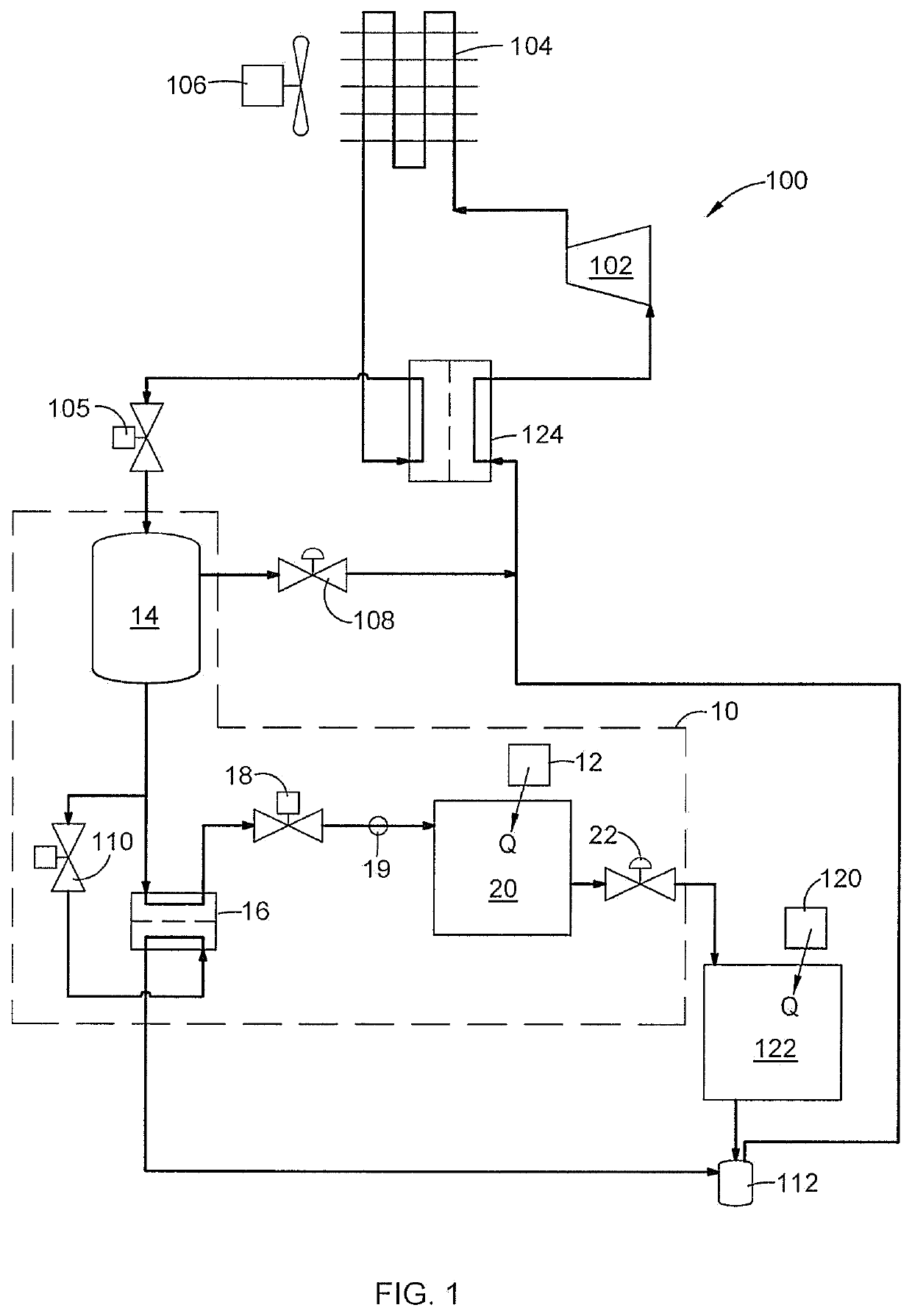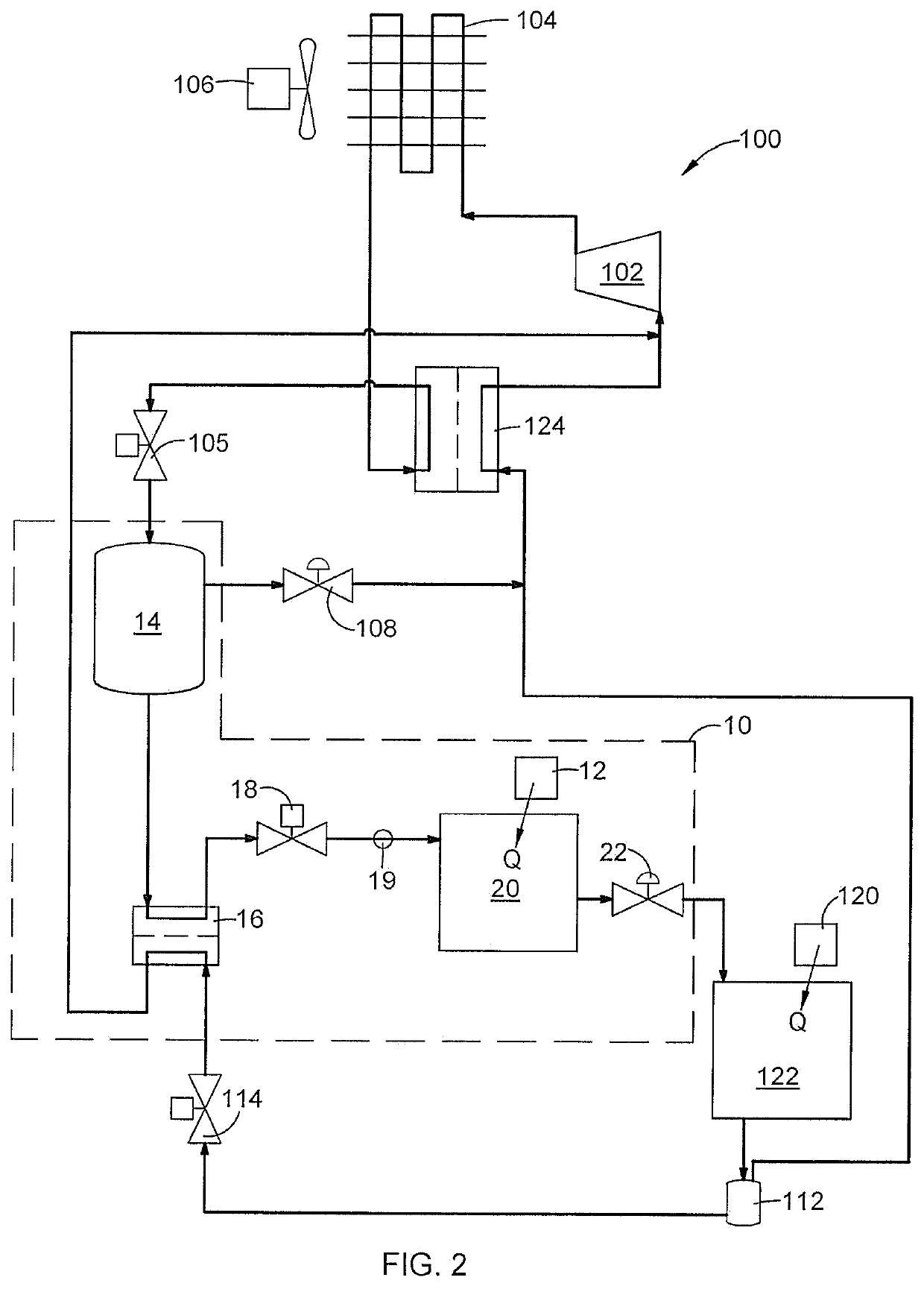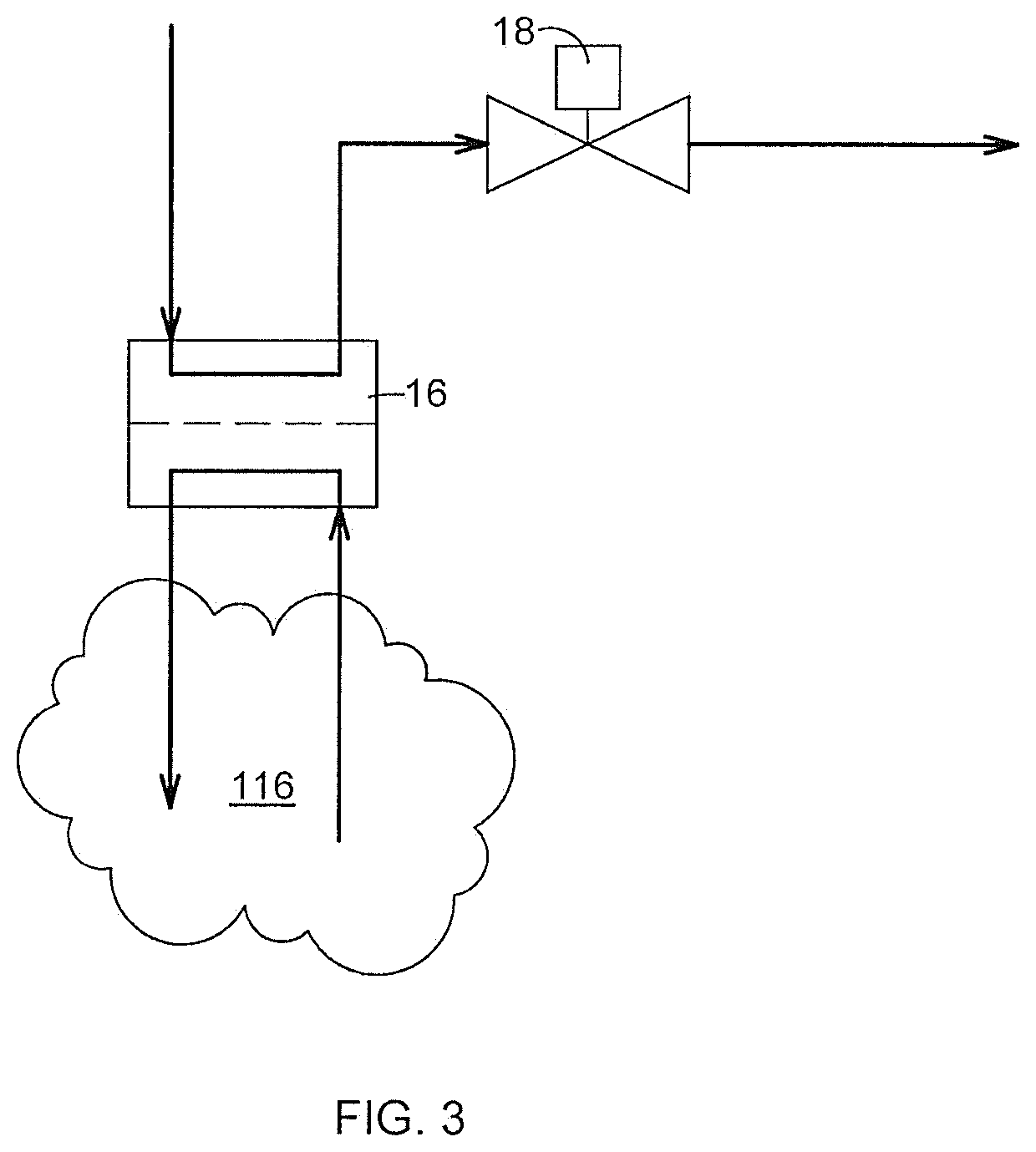Method and apparatus for isothermal cooling
a technology of isothermal cooling and cooling apparatus, which is applied in the field of cooling and refrigeration, can solve the problems of poor isothermality and low performance of system evaporators, difficult to achieve isothermal heat rejection at a specified temperature with multiple evaporator channels and evaporators, and general unsatisfactory distribution of liquid flow
- Summary
- Abstract
- Description
- Claims
- Application Information
AI Technical Summary
Benefits of technology
Problems solved by technology
Method used
Image
Examples
Embodiment Construction
[0018]Referring to the drawings wherein identical reference numerals denote the same elements throughout the various views, FIG. 1 depicts an exemplary cooling apparatus 10 (bounded by a dashed line). The cooling apparatus 10 is operable to remove heat from at least one heat load. As used herein the term “heat load” refers to any device, system, or item of equipment which generates heat that needs to be removed. In particular, the heat load may be an isothermal heat load, meaning that heat must be removed at a constant, predetermined temperature for proper functioning of the equipment. In FIG. 1, a primary heat load 12, which is an isothermal heat load, is depicted schematically.
[0019]The cooling apparatus 10 fundamentally operates by providing a low-temperature liquid refrigerant to an evaporator which is thermally coupled to the primary heat load 12. Boiling of the refrigerant within the evaporator carries away heat energy. As will be explained in more detail below, the cooling ap...
PUM
 Login to View More
Login to View More Abstract
Description
Claims
Application Information
 Login to View More
Login to View More - R&D
- Intellectual Property
- Life Sciences
- Materials
- Tech Scout
- Unparalleled Data Quality
- Higher Quality Content
- 60% Fewer Hallucinations
Browse by: Latest US Patents, China's latest patents, Technical Efficacy Thesaurus, Application Domain, Technology Topic, Popular Technical Reports.
© 2025 PatSnap. All rights reserved.Legal|Privacy policy|Modern Slavery Act Transparency Statement|Sitemap|About US| Contact US: help@patsnap.com



